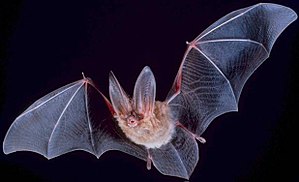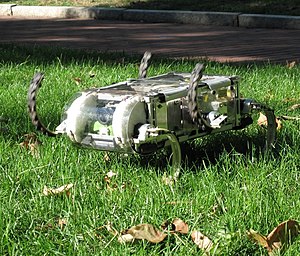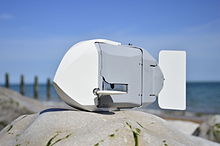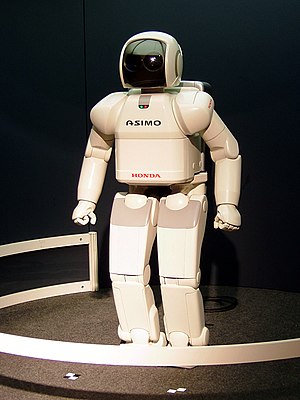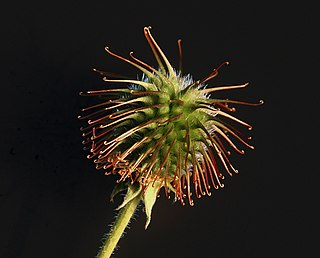
Biomimetics or biomimicry is the emulation of the models, systems, and elements of nature for the purpose of solving complex human problems. The terms "biomimetics" and "biomimicry" are derived from Ancient Greek: βίος (bios), life, and μίμησις (mīmēsis), imitation, from μιμεῖσθαι (mīmeisthai), to imitate, from μῖμος (mimos), actor. A closely related field is bionics.

Rectilinear locomotion or rectilinear progression is a mode of locomotion most often associated with snakes. In particular, it is associated with heavy-bodied species such as terrestrial African adders, pythons and boas; however, most snakes are capable of it. It is one of at least five forms of locomotion used by snakes, the others being lateral undulation, sidewinding, concertina movement, and slide-pushing. Unlike all other modes of snake locomotion, which include the snake bending its body, the snake flexes its body only when turning in rectilinear locomotion.

Animal locomotion, in ethology, is any of a variety of methods that animals use to move from one place to another. Some modes of locomotion are (initially) self-propelled, e.g., running, swimming, jumping, flying, hopping, soaring and gliding. There are also many animal species that depend on their environment for transportation, a type of mobility called passive locomotion, e.g., sailing, kiting (spiders), rolling or riding other animals (phoresis).
Robot locomotion is the collective name for the various methods that robots use to transport themselves from place to place.

Fish locomotion is the various types of animal locomotion used by fish, principally by swimming. This is achieved in different groups of fish by a variety of mechanisms of propulsion, most often by wave-like lateral flexions of the fish's body and tail in the water, and in various specialised fish by motions of the fins. The major forms of locomotion in fish are:
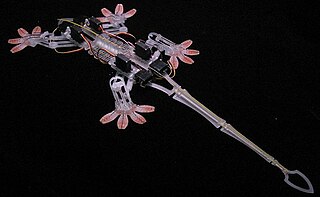
Synthetic setae emulate the setae found on the toes of a gecko and scientific research in this area is driven towards the development of dry adhesives. Geckos have no difficulty mastering vertical walls and are apparently capable of adhering themselves to just about any surface. The five-toed feet of a gecko are covered with elastic hairs called setae and the ends of these hairs are split into nanoscale structures called spatulae. The sheer abundance and proximity to the surface of these spatulae make it sufficient for van der Waals forces alone to provide the required adhesive strength. Following the discovery of the gecko's adhesion mechanism in 2002, which is based on van der Waals forces, biomimetic adhesives have become the topic of a major research effort. These developments are poised to yield families of novel adhesive materials with superior properties which are likely to find uses in industries ranging from defense and nanotechnology to healthcare and sport.
The zero moment point is a concept related to the dynamics and control of legged locomotion, e.g., for humanoid or quadrupedal robots. It specifies the point with respect to which reaction forces at the contacts between the feet and the ground do not produce any moment in the horizontal direction, i.e., the point where the sum of horizontal inertia and gravity forces is zero. The concept assumes the contact area is planar and has sufficiently high friction to keep the feet from sliding.

Metin Sitti is the Director of the Physical Intelligence Department at the Max Planck Institute for Intelligent Systems in Stuttgart, which he founded in 2014. He is also a Professor in the Department of Information Technology and Electrical Engineering at ETH Zurich, a Professor at the School of Medicine and College of Engineering at Koç University and co-founder of Setex Technologies Inc. based in Pittsburgh, USA.
Shigeo Hirose is a pioneer of robotics technology and a professor at the Tokyo Institute of Technology.

Legged robots are a type of mobile robot which use articulated limbs, such as leg mechanisms, to provide locomotion. They are more versatile than wheeled robots and can traverse many different terrains, though these advantages require increased complexity and power consumption. Legged robots often imitate legged animals, such as humans or insects, in an example of biomimicry.
Neurorobotics is the combined study of neuroscience, robotics, and artificial intelligence. It is the science and technology of embodied autonomous neural systems. Neural systems include brain-inspired algorithms, computational models of biological neural networks and actual biological systems. Such neural systems can be embodied in machines with mechanic or any other forms of physical actuation. This includes robots, prosthetic or wearable systems but also, at smaller scale, micro-machines and, at the larger scales, furniture and infrastructures.

RHex is an autonomous robot design, based on hexapod with compliant legs and one actuator per leg. A number of US universities have participated, with funding grants also coming from DARPA.
Whegs are mechanisms for robot locomotion. Whegs use a strategy of locomotion that combines the simplicity of the wheel with the obstacle-clearing advantages of the foot.
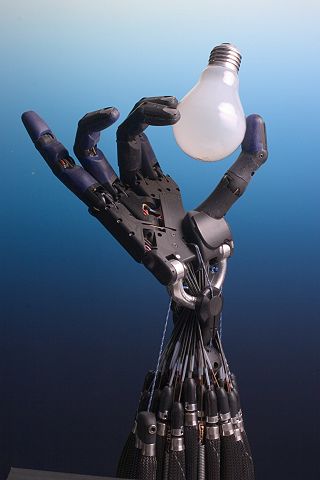
Robotics is an interdisciplinary branch of electronics and communication, computer science and engineering. Robotics involves the design, construction, operation, and use of robots. The goal of robotics is to design machines that can help and assist humans. Robotics integrates fields of mechanical engineering, electrical engineering, information engineering, mechatronics engineering, electronics, biomedical engineering, computer engineering, control systems engineering, software engineering, mathematics, etc.
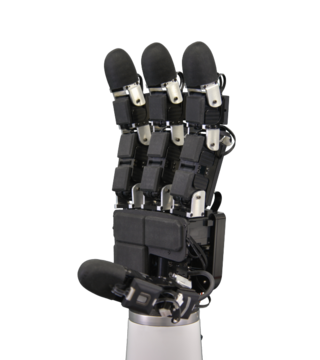
A tactile sensor is a device that measures information arising from physical interaction with its environment. Tactile sensors are generally modeled after the biological sense of cutaneous touch which is capable of detecting stimuli resulting from mechanical stimulation, temperature, and pain. Tactile sensors are used in robotics, computer hardware and security systems. A common application of tactile sensors is in touchscreen devices on mobile phones and computing.

LAURON is a six-legged walking robot, which is being developed at the FZI Forschungszentrum Informatik in Germany. The mechanics and the movements of the robot are biologically-inspired, mimicking the stick insect Carausius Morosus. The development of the LAURON walking robot started with basic research in field of six-legged locomotion in the early 1990s and led to the first robot, called LAURON. In the year 1994, this robot was presented to public at the CeBIT in Hanover. This first LAURON generation was, in contrast to the current generation, controlled by an artificial neural network, hence the robot's German name: LAUfROboter Neuronal gesteuert. The current generation LARUON V was finished in 2013.

Soft robotics is a subfield of robotics that concerns the design, control, and fabrication of robots composed of compliant materials, instead of rigid links. In contrast to rigid-bodied robots built from metals, ceramics and hard plastics, the compliance of soft robots can improve their safety when working in close contact with humans.

A robot fish is a type of bionic robot that has the shape and locomotion of a living fish. Most robot fish are designed to emulate living fish which use body-caudal fin (BCF) propulsion, and can be divided into three categories: single joint (SJ), multi-joint (MJ) and smart material-based "soft-body" design.

Auke Jan Ijspeert is a Swiss-Dutch roboticist and neuroscientist. He is a professor of biorobotics in the Institute of Bioengineering at EPFL, École Polytechnique Fédérale de Lausanne, and the head of the Biorobotics Laboratory at the School of Engineering.

Elena Garcia Armada is a Spanish researcher, roboticist and business founder who has conducted research on prosthetic exoskeletons to aid people in walking.


